Meet the golf course manager: The North Berwick GC’s Stuart Greenwood
The club has well over 40,000 rounds of golf played on it every year. Stuart explains how this is achieved without suffering a decline in the quality of the links venue.
Even in the glittering array of Scotland’s seaside golf courses, The North Berwick Golf Club stands out as a rare gem.
Stuart Greenwood has kept the historic West Links course in tip top condition for the past 30 years, where he is course manager.
He takes immense pride in his work where keeping one of the world’s oldest golf courses in pristine condition is a daily challenge.
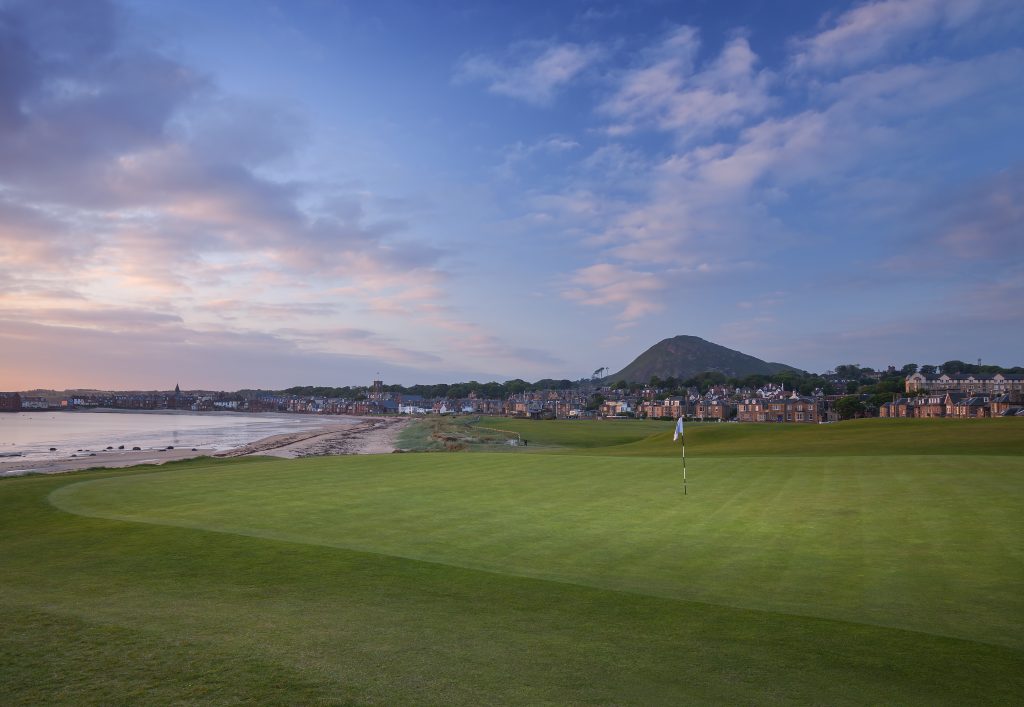
North Berwick – West Links. All course images © Mark Alexander
Perched on the East Lothian coast, the course attracts professional and amateur golfers from all over the world as well as closer to home.
Since the Club was founded in 1832, the art of greenkeeping and course management has dramatically changed.
Stuart and his course team accumulate an impressive 137 years of greenkeeping experience at North Berwick alone.
We speak to him about the challenges involved in maintaining such a historic and stunning venue.
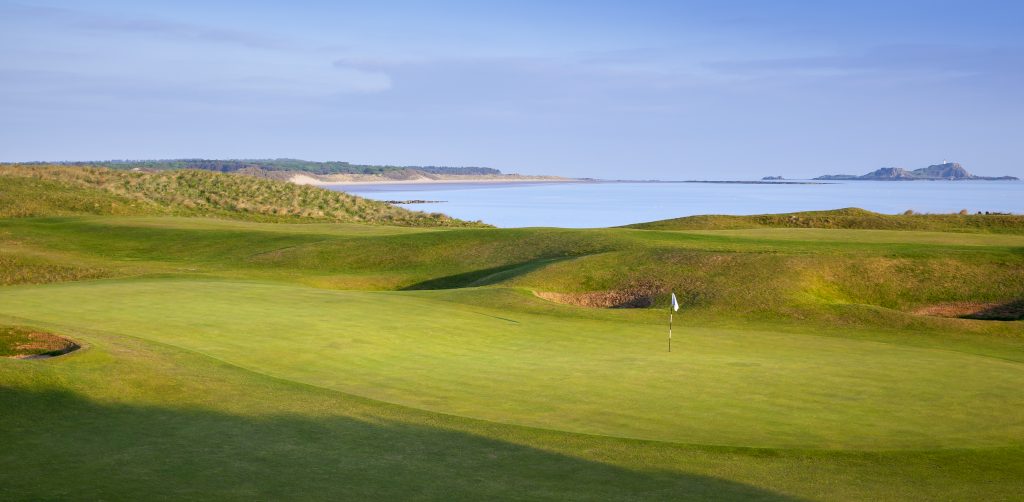
North Berwick – West Links
What was your path to greenkeeping, where did you study and how long have you been at club?
When I left North Berwick High School, I had originally organised a summertime job at Kilspindie Golf Club to tide me over and to see what I would do after leaving school. I must have done okay because they asked me if I wanted to stay on full time. I was always keen on golf and I thought it was a good idea to get involved within the industry at that time. I went on to study at Elmwood College in Fife on a block release course studying for a City & Guilds in greenkeeping.
After five years I moved to Winterfield Golf Club in Dunbar as head greenkeeper, where I worked for 10 years. On leaving Kilspindie Golf Club I became a member there and 27 years after starting work there, I was elected club captain, 2007-2010.
I learnt a lot during my time as club captain, it provided a good insight. In 1990 I joined The North Berwick Golf Club as course manager and have been here ever since. I was very aware of The North Berwick Golf Club as during my school days we had golf days at the course and I played the course on many occasions during my teenage years and into my early 20s playing various matches and in competitions too.

North Berwick – West Links
Who makes up your team for the management of the course?
I have a greenkeeping team of eight including two deputies, Stewart Crawford and Chris Moffat. The team also includes Brian Hutchison, Jim Arthur, Jonny Watt, Gary Hawthorn, Neil Sturrock and Jamie Bullen.
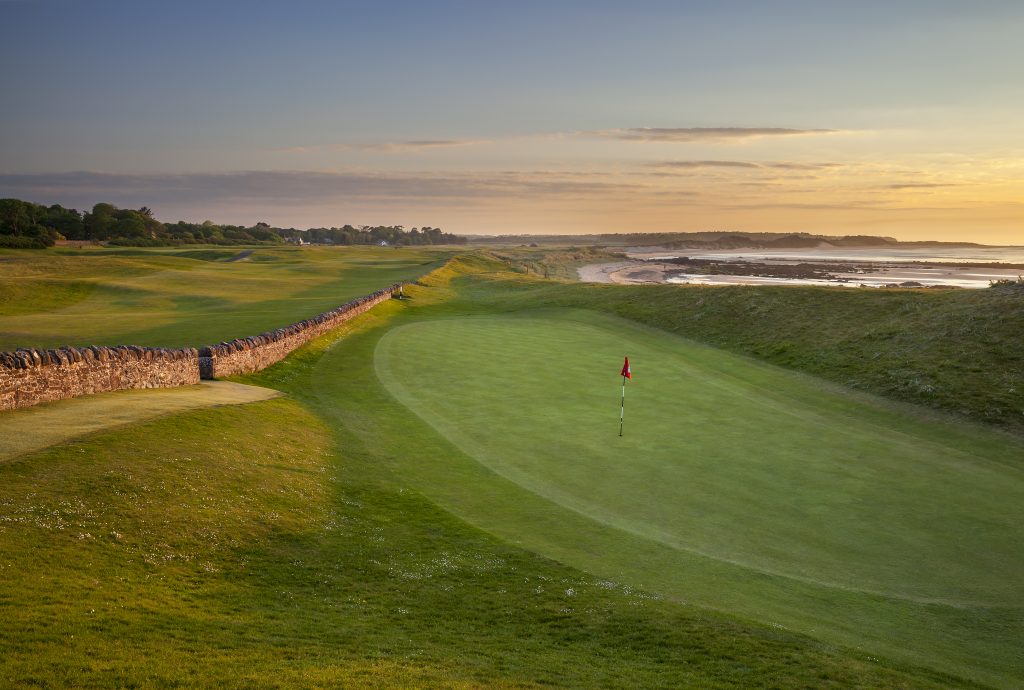
North Berwick – West Links
What would you say are the biggest challenges you currently face and how does this impact on the daily maintenance?
The biggest challenge at North Berwick is the amount of golf we have here; we are a very popular, busy golf course. We have well over 40,000 rounds of golf being played a year.
We have a very busy club calendar and two other clubs who use the course; Tantallon and Bass Rock golf clubs.
That along with 10,000-plus visitors a year and hosting regular national and international championships means you need to plan and take the opportunities when you can. You have to try to create windows when you can carry out maintenance without interfering with play as well.
That’s the biggest challenge along with things like climate change which impacts on the course as well. The weather is so up in the air so you don’t know what you are going to get from one year to the next.
We are out in all weathers and you have to be flexible with the course being so busy so you have to work early or late if needs be. You talk to other golf clubs and their highlight of the year is their club championship and we have three of those a year. Everything here is in triple when it comes to us trying to create the same standards for everyone who is playing, which presents quite a unique challenge in itself.
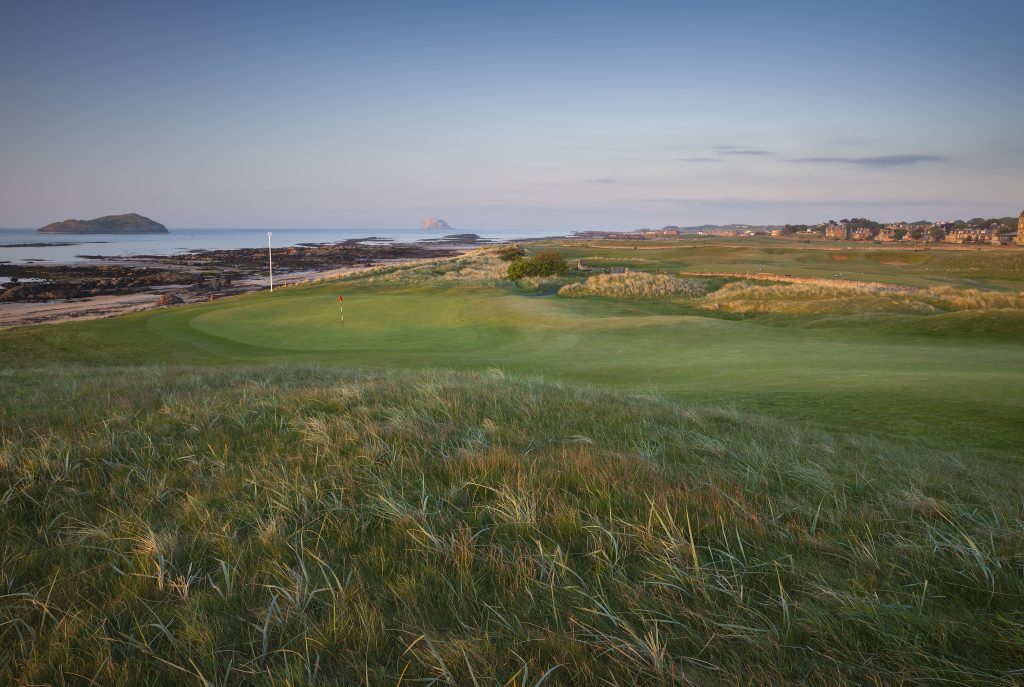
North Berwick – West Links
What aeration and topdressing programmes do you use across the course, what equipment and processes do you use and how often are you undertaking this?
Topdressing and aeration is something that we are now undertaking on an annual basis in order to achieve our STRI target ranges.
When it comes to topdressing we always try and apply at least 200 tonnes of sand on the greens each year. We aim to put on 400 tonnes of sand onto the fairways each year and around 100 tonnes of sand on the tees. We have a Dakota spin top dresser that does most of that work for us.
For aeration we have a Charterhouse Verti-drain and use a Greentek Slit Tiner and John Deere Aercore 1500, which gives us a bit more flexibility when it comes to aeration for the course.
These are market leaders and whatever machinery we buy here we always get it in on demo and go for the one that serves the course best, the one that we think will do the job best for us.
We use standard industry practices and processes; the most important thing is trying to find the window to do the work and trying to plan ahead so the desired aeration on the course can be done.
I look after the planning with the help of the team and I always say no idea is a bad idea. If they have a better method or approach, I am always open to suggestions.
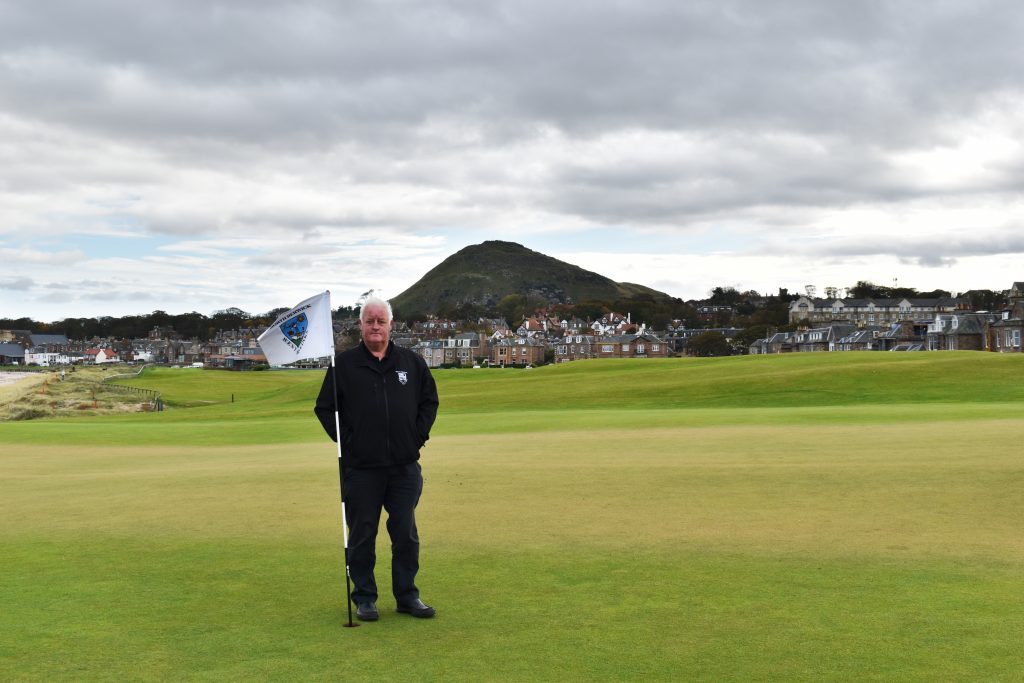
Stuart Greenwood
What do you think are the strengths that have carried you through your career and current position at The North Berwick Golf Club and how do you look forward to keep the course evolving?
You have to have broad shoulders to start with and patience. Never take things for granted because if you do that you are losing sight of what’s really going on. The club itself is very forward thinking and always keen to do the best for the course and make improvements. It is important that they are keen to provide anything that we need to maintain the course and better it. I spend as much time as I possibly can out on the golf course, there is nothing more I like than being out on the course.
You need to keep moving forward. Golf is a very important part of my life and I have played golf since I was nine years old. If I am not working in golf I am watching it or reading about it or playing it. Golf has been my passion all my life. Without golf my life would be very boring.
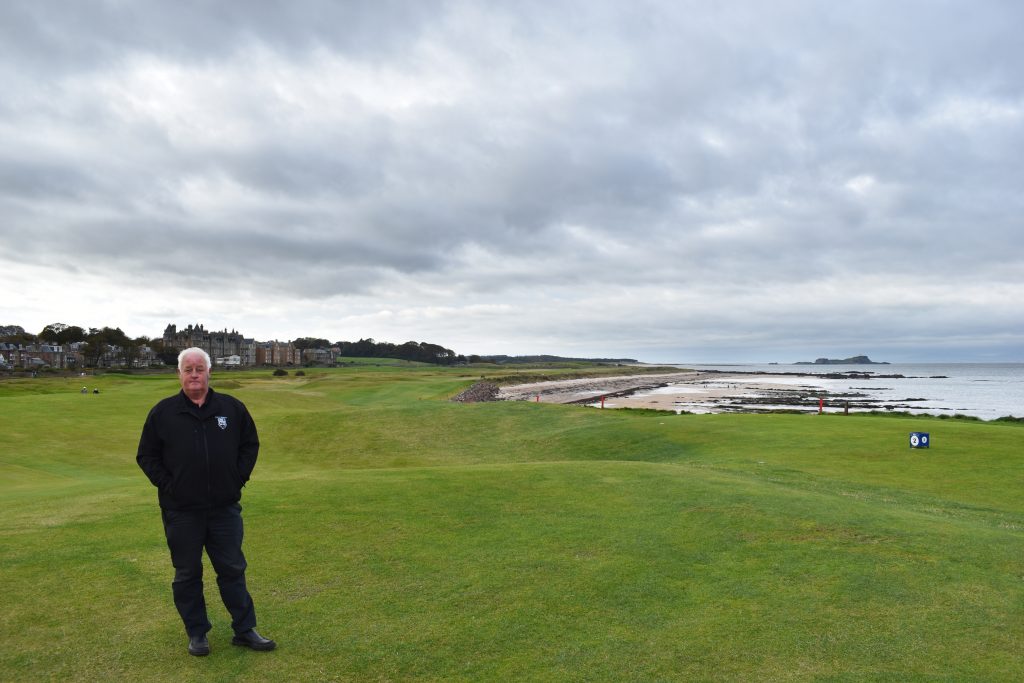
Training and education are key to developing a good team, what do you do to ensure you are investing in raising the standard of practice and performance from team members?
Training and education is something that is coming more to the forefront these days than it was before. Most of the staff have been here for a number of years and are very experienced.
Any opportunity that they see that could benefit them we will try and get them to do that.
Education is becoming more important and previously qualifications used to be based on horticulture whereas now they are more based on greenkeeping, which is a good thing. There is no better training than on-the-job training and learning from experienced people who have done the job for a number of years and picking up good habits while avoiding any bad ones.
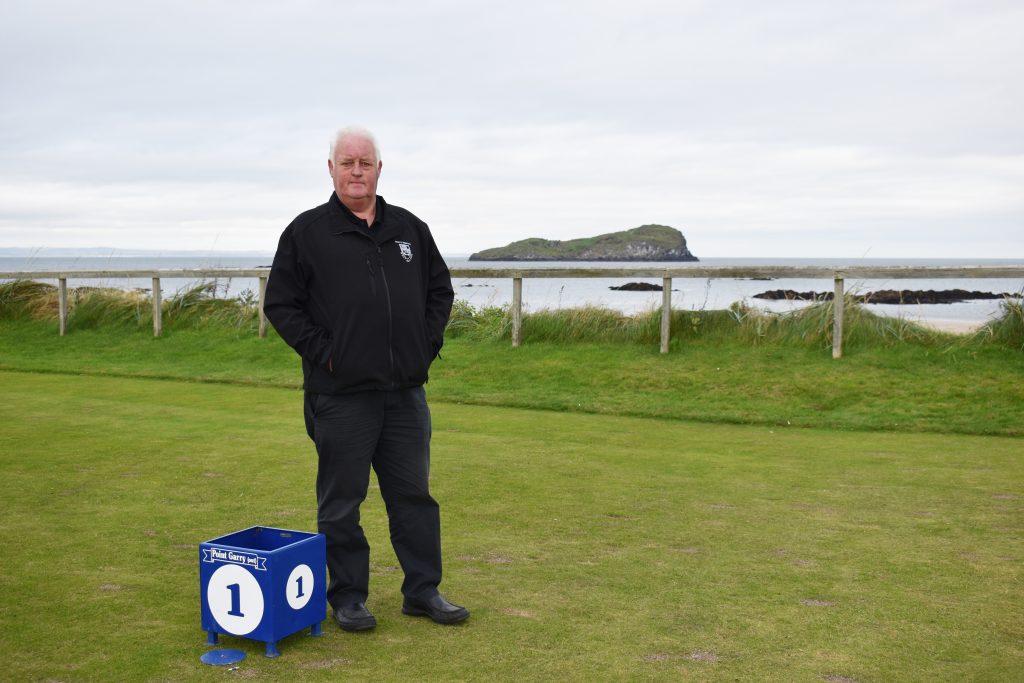
The club is currently installing additional irrigation. Which areas of the course will undergo installation and what are the reasons you are doing this and how will it help moving forward?
We are currently adding irrigation to our current system to deal with heavy traffic areas and pathways and this is mainly to help us achieve a better grass cover in these crucial areas.
You and the team are about to embark on the annual bunker renovation. What exactly are the plans, how many bunkers do you intend to renovate, how long do you envisage this will take and out of interest, exactly how many bunkers does the course have in total?
We plan to renovate about 20 bunkers this year, which is a normal annual process.
This will consist of mainly links style revetted faces. Bunkers that are south facing and exposed to the sun tend to dry out and deteriorate much quicker so need to be refaced more often than others not so exposed. This will happen over the winter months and hopefully completed by the end of January depending on weather and other course works.
There are 70 bunkers in total around the course, not a huge amount but all are well placed.
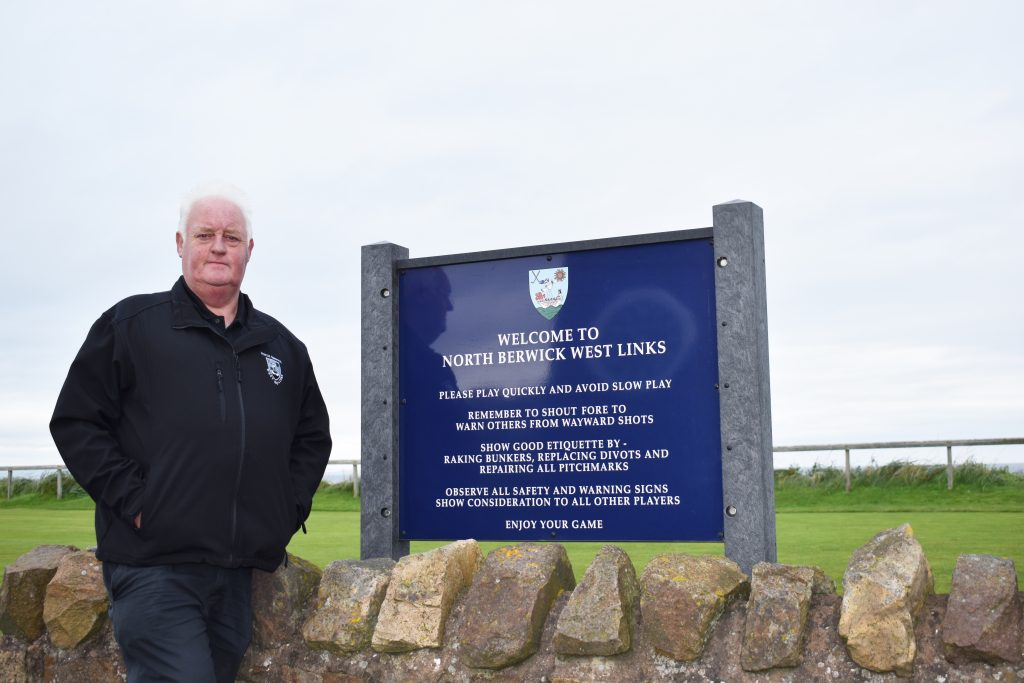
More and more course managers are communicating with members and visitors regularly in an effort to help them understand the greenkeeping team’s function. How are you going about this and how do you think this helps you, the team and members?
We have a weekly news bulletin that goes out to members called The Weekly Connect.
This keeps the members up to date with what’s going on around the club and the course.
We also have a quarterly newsletter detailing what’s going on and what is planned. This, along with any additional information we would send out via email, lets members know what is happening. We also use the website as an additional form of communication.
Communication has become far more important these days than ever before. The more we can communicate with the people using the course the better as they will have a better understanding of why, when and how we do what we do.
You said the course has a heavy number of rounds played annually, what cultivars are you using across the course and how are you managing to limit wear by the players?
Stuart Greenwood: We tend to use mainly Barenbrug grass seeds as we tend to find these have the best cultivars for growing in our environment. For the greens, green surrounds and tees we use mainly bar fescue which consists of a 50 per cent slender creeping red fescue and 50 per cent chewings fescue. We have quite a high bent grass content on the greens, so we are trying to introduce as much fescue as possible to help continue to improve green surfaces.
On areas of heavy traffic routes and walkways we have been using Barenbrug Ultrafine dwarf rye.
The main cultivar is Barolypic which has a very fine leaf and has a very good germination rate and good establishment, is extremely hard wearing and blends in very well in our environment.
Ultrafine is widely used and endorsed by many people.
We try to manage and limit wear by players by using barrier hoops and roped off areas to try to spread the traffic as much as possible. It is not a simple task because we sit on a narrow strip of land and haven’t got much room for movement around the course, so it is quite crucial that we try and save as many areas and spread the wear as much as we can.
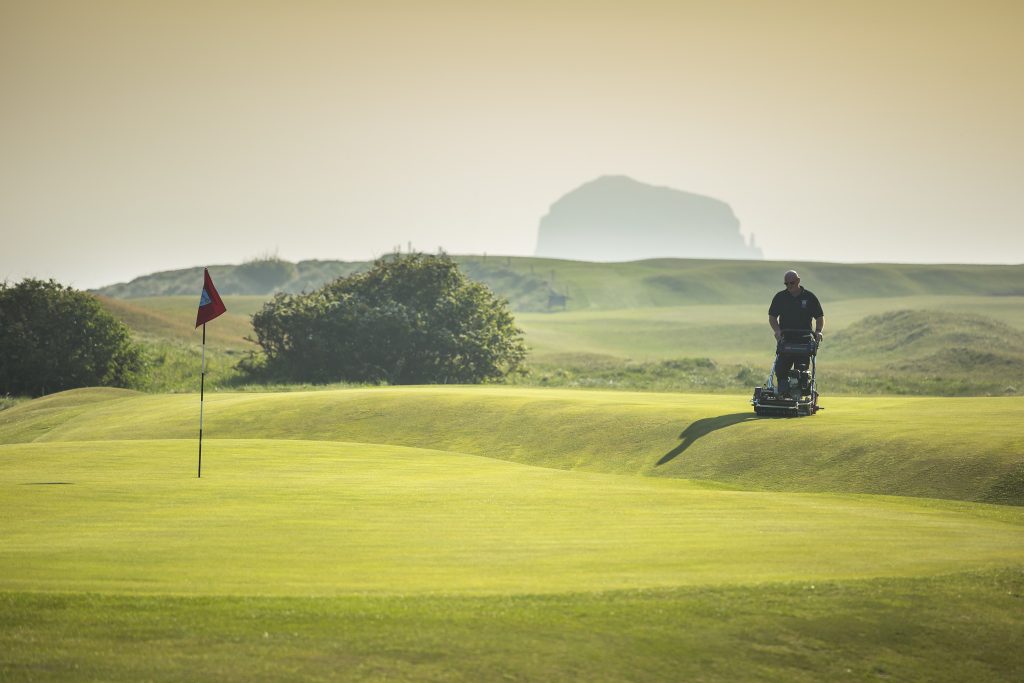
North Berwick – West Links
Please can you detail your aeration programme, what you will be doing, when and how this benefits the course.
We plan to solid tine the green surfaces at least three times this winter. This will help us to get our top dressing sand into the turf profile which will help us to reduce our organic matter levels, compaction and the circulation of water and nutrients in the turf as well, which will help us produce a much healthier and more resilient turf.
This will be done using the John Deere Aercore and Chaterhouse Verti-drain using various tines from 15mm down to 8mm.
The same solid tining will happen to greens, surrounds and tees as well for the same purpose.
Fairways will have quite an extensive slit tine programme along with some verti-draining in more heavily played landing areas. This will also help with the top dressing work on the course.
Greenkeeping is not rocket science and my approach is to try and keep things as simple as possible. If you try and do the crucial things simply it sometimes has a far better effect than making it more complicated than it needs to be.
The feedback from members is that current course conditions are improving, how have you and the team achieved this and how do you continue to push the standards to the next level?
It is the pleasure and enjoyment of the work. I always say I come to work because I enjoy it and there is no point doing a job if you are not happy doing it. It is the pleasure of seeing golfers happy, seeing members happy and once you get to a certain level it is not about stopping there, you should always try to improve standards all the time to take things to the next level.
The work on our coastal erosion project was completed in 2019. Early indications show that the work has been successful. I was involved in the whole processes and was the person on the ground project managing it with the consultants. It was a huge undertaking by the club to go ahead with the project.
In 2016 we achieved the GEO (Golf Environment Organisation) Certified Eco-Label accreditation for best management practice within a golf facility.
This accreditation is a symbol of great golf environments – designating that a golf facility has met a credible standard in the area of nature, water, energy, supply chain, pollution control and community. It demonstrates how the facility is committed to continually improve and is widely trusted and endorsed by a growing number of organisations and people both inside and outside of golf. Anything we can do to help the environment is important.
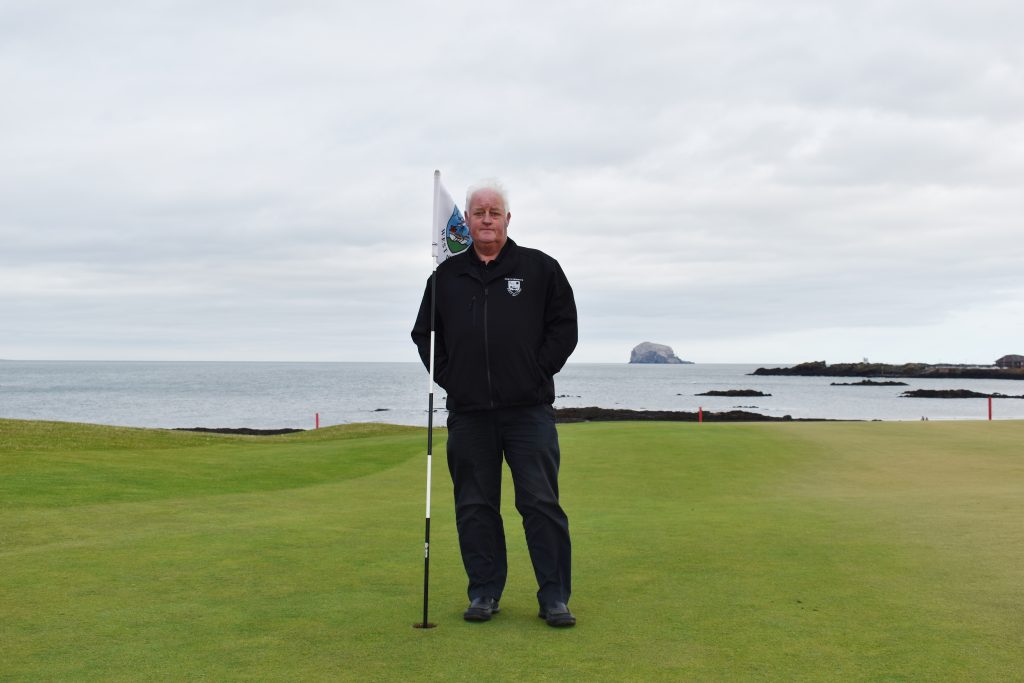
What currently gives you the greatest satisfaction from your job?
I am always happy in my work. I wake up wanting to go to work and it is always satisfying to go home at night knowing that I’ve done all I can to make the course as good as possible and that everyone is happy with the golf course. I enjoy seeing the course staff progress and take pride in their work. When I am not in work or spending time with my family, I’m either watching or playing golf.
What changes do you think need to be made to benefit the industry and profession of the greenkeeper?
I think greenkeeping has moved up the ladder as a whole in the industry. We are all very professional in the work we do and it’s important to be heard. The greenkeeper knows more about the course than anyone else so the more they are listened to the better golf courses will be in the long term. Greenkeepers have a passion for what they do.
What do you think are the strengths that have carried you through your career and how do you ensure you stay abreast of developments and leading edge technology for the benefit of the course maintenance?
I have always been keen to listen to people.
I have never taken anything for granted and always been there to help anyone through their career as well.
I have been involved with the British and International Golf Greenkeepers’ Association (BIGGA) for a number of years and served on local committees and on the national board when I was a director for five years from 2012 to 2017 as well.
This was a great honour and something I enjoyed doing.
Being involved with BIGGA has given me a great understanding of greenkeeping itself.
It has an important part to play in moving the industry forward, organising courses, training opportunities, education and is great for networking and keeping up to date with what’s going on in the industry, they do a great job.
I would encourage every greenkeeper in the country to get involved with BIGGA.















Let me tell You a sad story ! There are no comments yet, but You can be first one to comment this article.
Write a comment